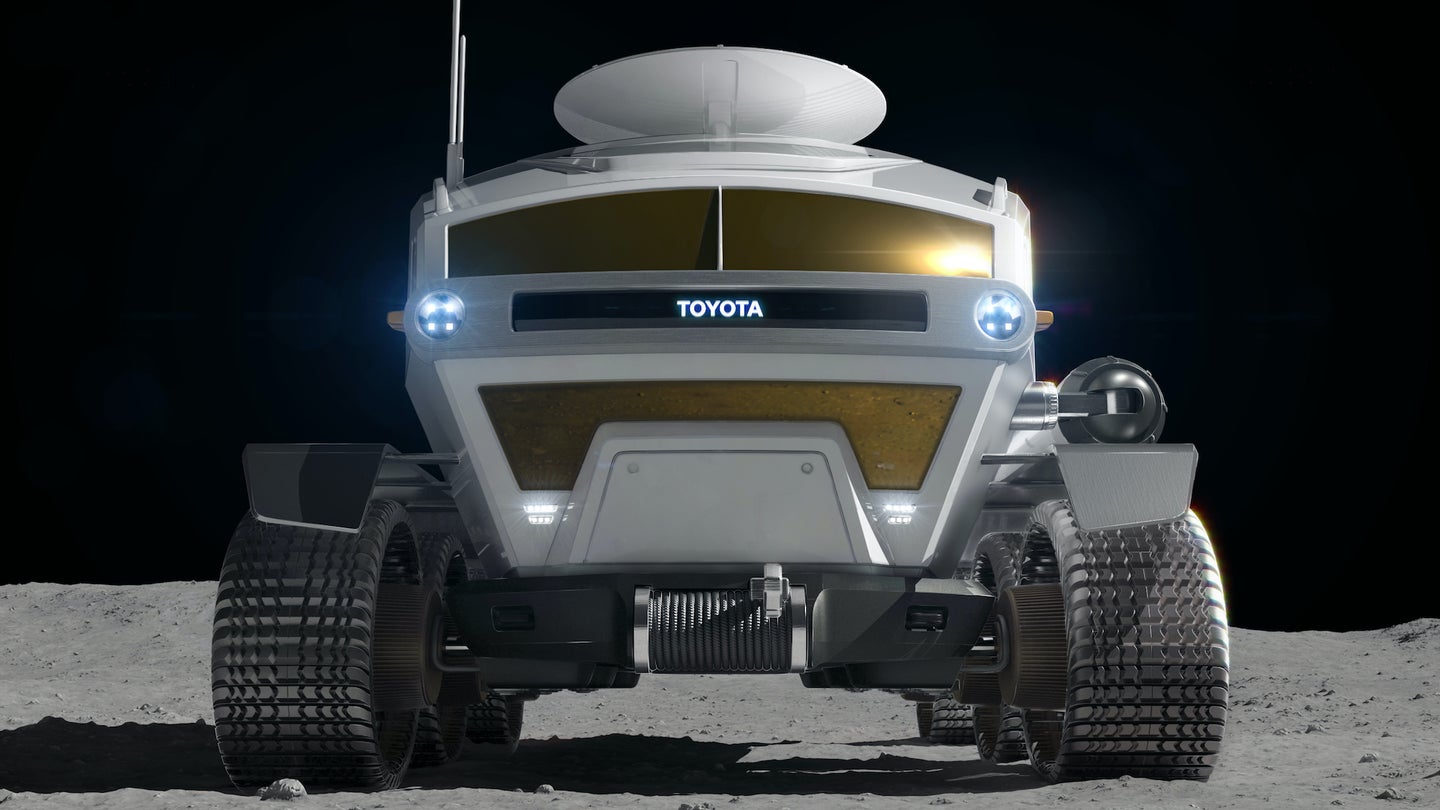Japan’s New ‘Lunar Cruiser’ Moon Rover Is Named After the Toyota Land Cruiser
Overlanding on the moon in a 6×6, hydrogen fuel cell-powered Toyota, anyone?

Last year, the Japan Aerospace Exploration Agency (JAXA), which is basically Japanese NASA, and Toyota announced that they would co-develop a manned, pressurized vehicle for exploring the moon using the power of hydrogen fuel cells. However, the vehicle went without a name until Friday morning, when the pair invoked the legacy of Toyota's famously rugged Land Cruiser by christening their moon-mobile the Lunar Cruiser.
Seen by the multi-industrial group "Team Japan" as "the starting point of a vision of a future lunar surface-based society," the Lunar Cruiser is how JAXA plans to explore the moon's north and south poles. As mentioned above, propulsion will come primarily from hydrogen fuel cells, though some energy will be gleaned from solar rays, which have no atmosphere to penetrate and are thus more intense on the surface of the moon.
Since development began in July 2019, engineers have relied on simulations to work out powertrain heat management in an airless environment, and test tire designs meant to hold up to the coarse, sharp regolith dusting of the moon's surface.
Both full-scale models and virtual reality ones are being employed to mock up the Lunar Cruiser's cabin layout, which is expected to come together in prototype form this fiscal year. Testing of the prototype rover's sub-assemblies is planned to begin next spring and will lead to the construction of a full-scale mule in 2022.
Come 2024, an engineering model will be designed, built, and evaluated so as to prepare the dev team to build the flight model—the one that'll actually head to the moon.
The final vehicle will be assembled and benchmarked in 2027, by which point—provided we're on the right timeline—a certain frizzy-haired NASA ASCAN will be in training to wheel the thing around the lunar surface.
Got a tip? Send us a note: tips@thedrive.com
